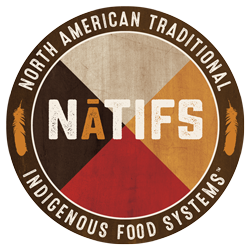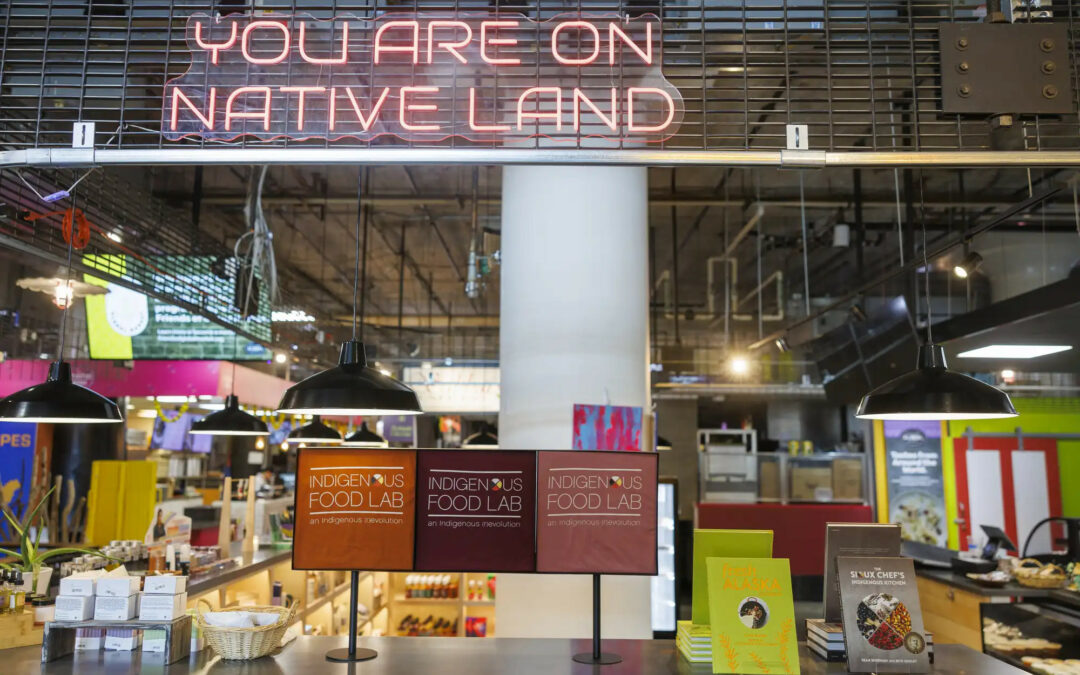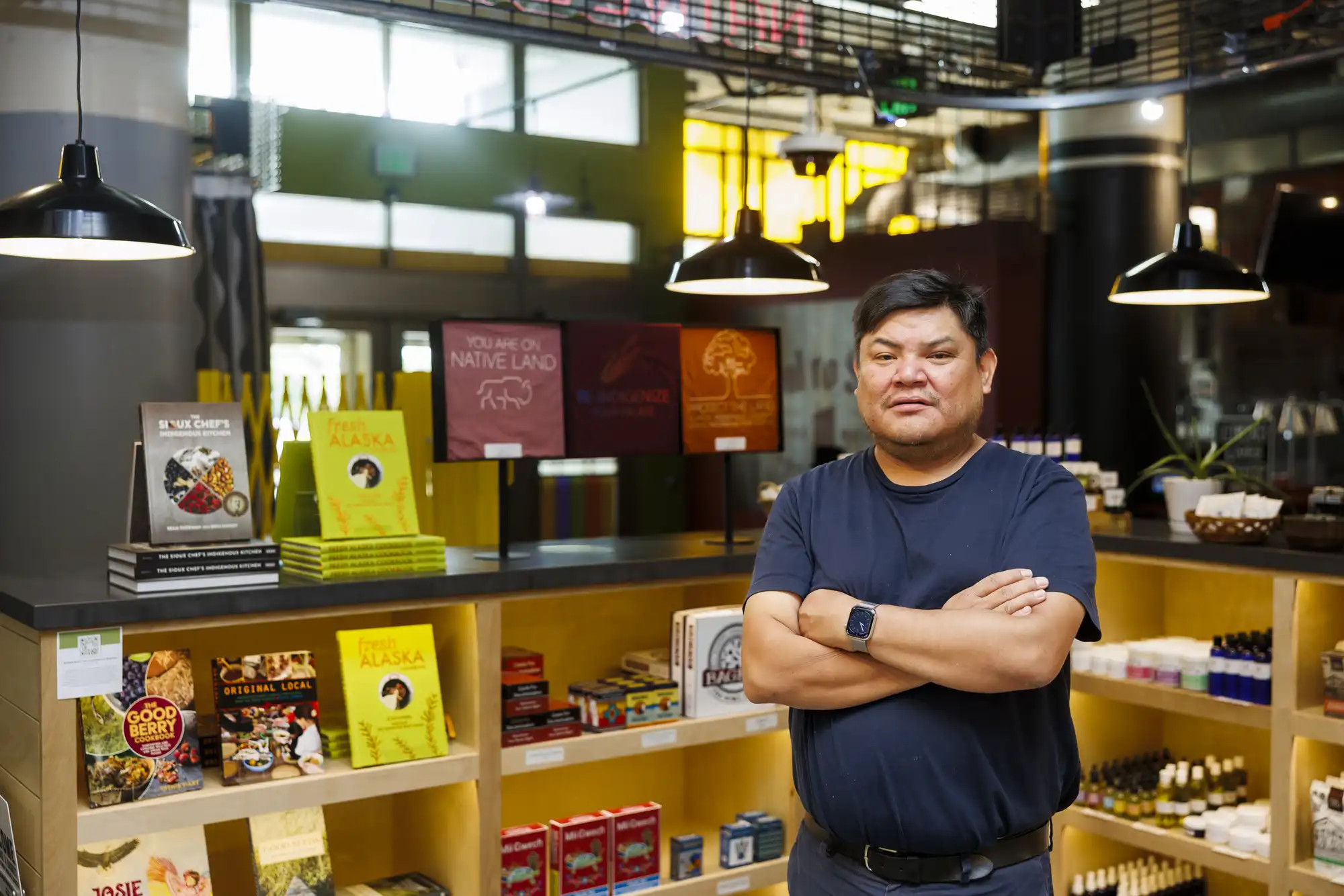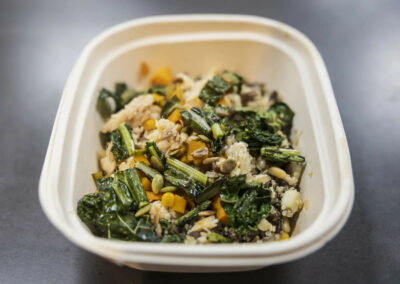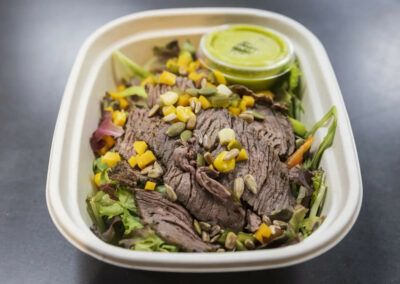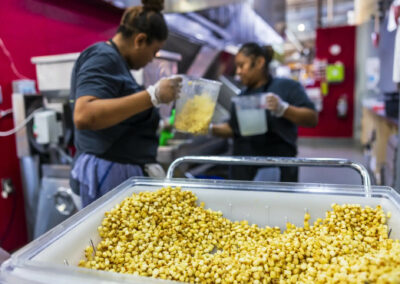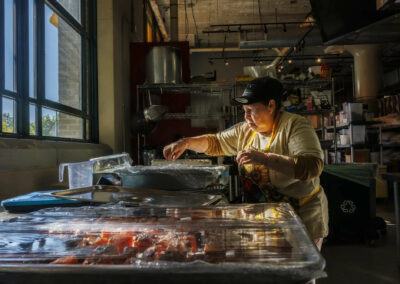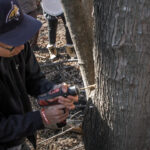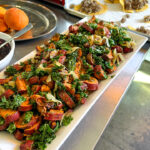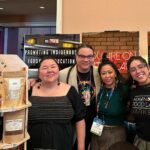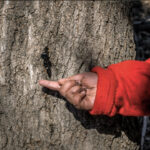SOURCE: by Melissa Olson | MPRnews
PHOTO: Kerem Yücel
Listen to or view original artical at MPRnews ->
Inside the kitchen at the Mystic Lake Conference Center, half a dozen chefs are busy preparing to serve regional Indigenous cuisine. For chef Freddie Bitsoie, one dish is delicious history.
“I made a pozole. It originates in Nahua culture. It’s one of the longest, continuous-made dishes in human history,” says Bitsoie. “The proteins change throughout the season, and the Pueblos of New Mexico have their own way of making it and that’s the way that I made it.”
This past spring, the Minneapolis-based North American Traditional Indigenous Food Systems, or NĀTIFS, welcomed Bitsoie as the inaugural chef-in-residence at its food lab.
Founded by chef Sean Sherman, NĀTIFS grew out of conversations with chefs, Indigenous food and nutrition experts, and tribal communities — all of whom said they wanted a center for Indigenous foodways.
At the Sixth Annual Conference on Native American Nutrition held this week in Shakopee, NĀTIFS hosted chefs from around North America.
Bitsoie comes to the residency at the Indigenous Food Lab having served as the executive chef at the Mitsitam Native Foods Cafe at the National Museum of the American Indian for over half a decade. It’s one of several places where Bitsoie has developed his take on modern Indigenous cuisine.
“I started looking at my menu,” Bitsoie says. “I decided to get rid of the words ‘traditional’ and ‘authentic.’ Because what my idea of traditional is isn’t the same idea of what another person thinks traditional is.”
Bitsoie is also the author of “New Native Kitchen,” a cookbook celebrating Indigenous recipes. He’s contributed to several more cookbooks, including “The Sioux Chef’s Indigenous Kitchen” and “America: The Cookbook.”
While his work stays true to Indigenous ingredients and practices, he says, Indigenous flavor profiles have completely evolved over the past millennium.
“If any of us had food from 800 years ago, none of us would like it,” Bitsoie says. “Because we’ve all grown accustomed to acid, to salt, to sweetness, to bitterness.”
Bitsoie, who is Navajo, was born in Monticello, Utah, and grew up the small towns that dot Interstate 40 as it winds its way west through New Mexico, Arizona and California. He studied anthropology and art history at the University of New Mexico, and credits both disciplines with igniting a passion for research into ancestral and historic Indigenous foodways.
Rooted firmly in the present, Bitsoie shares older Navajo stories as a way to talk about how cultures change and adapt. Like the story about how sheep were first introduced to Navajo culture.
“What the Navajo people did was they created an origin story,” Bitsoie said. “For four days, the people had to deal with this huge fog, it was so thick, one couldn’t even walk through it. It was just tremendously thick. And after the fourth day, the fog lifted and it left a little puff of clouds. And that’s how the sheep came.”
He says the practice of Navajo cooks walking several hundred feet outside their front door to their corrals to butcher is just as important in understanding modern food practices.
“It’s like the first McDonald’s!” Bitsoie said. “It’s the first fast food that people can imagine, especially in the Western Hemisphere.”
Fellow chef Ismael Popoca Alguilar is the culinary lead at the Indigenous Food Lab and works alongside Bitsoie. He says the residency is an opportunity for the staff at NĀTIFS to get to know Bitsoie and to learn from his practice.
“For me, it’s an opportunity to get to know a chef, to get to know the art that they are familiar with,” says Popoca Alguilar. “Ensure that knowledge for all of us. Whether we need him to do a cooking demo, whether we need him to talk about his experience as an Indigenous chef from New Mexico or whether he’s just spending time with us. Sharing his spirit with us.”
‘Food is medicine’
Just outside the doors of the chef’s expo, conference goers buzz as they wait for the doors to open.
One conference attendee, Michael Meeks is holding a copy of Bitsoie’s cookbook.
Meeks works for the Caddo Nation of Oklahoma where a brand-new child care center has been built, and the community will train child care providers in nutrition.
“We came to this conference because we wanted to learn more about food sovereignty and Indigenous foodways,” Meeks says. “I was hoping to see some of the foods that he’s offering. Hoping to take that back to our new center and into our program.”
By the end of the evening, he had an opportunity to sample the Bitsoie’s pozole.
“Tonight, in particular, has just made me so happy,” Meeks said. “Food is medicine.”
‘Gossip theory’ of food
At the Indigenous Food Lab in Minneapolis, Bitsoie is busy prepping for a lesson he’ll give later in the week. He pauses to stir a large vat where corn is soaking as part of the nixtamalization process, invented by Indigenous people to make corn more nutritious.
He says his teaching, like his cooking, makes room for an appreciation of Indigenous peoples and their love for visiting with one another. It’s important to consider that in addition to making food nutritious, Native people innovate methods and techniques because they want to spend more time with one another. He calls it his “gossip theory” of food.
“Native people always tried to find ways to where they can sit down gossip, play cards,” he says. “Whatever it is they wanted to do.”
What motivates him as a chef-in-residence is the opportunity to create more cultural understanding and more opportunities for chefs, who like himself, nurture community through food.
